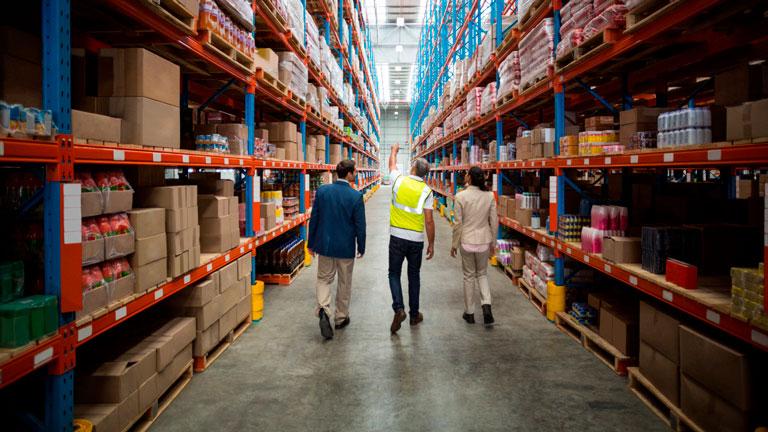Top 5 Order Fulfillment Strategies
for EU eCommerce Success

Let’s face it – if you run an eCommerce store in the US, Australia, or Canada, shipping to Europe can feel incredibly complicated. Seeing terms like IOSS, OSS, and VAT can make shipping to the EU seem like an impenetrable problem. However, we can tell you from experience that it’s not, and there are many ways to succeed in shipping to the EU.
In this blog post, we will discuss five order fulfillment strategies you can take and tailor to your business. When shipping overseas, picking the right fulfillment strategy is key. You don’t want to choose a method that’s too complex because you might not have the order volume to justify the costs or time spent on process management. But you don’t want to go for a solution that’s too simple either because it can negatively impact customer experience or result in overpaying.
Each business must find a balance between efficiency and customer satisfaction. Think of these five fulfillment strategies as levels your business will progress through over time. We’ll start with the most straightforward strategy and gradually increase complexity throughout the post.
1. Ship internationally from your own country.
In many ways, this is your business’s default strategy if you suddenly get a surprise order from Germany or Croatia. If you run a small Etsy shop and fulfill your own orders, shipping maybe one unit per week, you’ll receive one international order yearly.
So what would you do in that situation? Our professional opinion – is to go to the post office or UPS and ship it. Seriously.
As a non-EU-based eCommerce store owner, the simplest strategy for order fulfillment in the European market is to ship internationally directly from your home country. However, introducing a systematic approach only works well once you have sufficient international orders.
Implementing this method is very simple. First, pick any reliable international carrier, such as the US Postal Service, UPS, FedEx, or DHL. Then, take the order to a retail location, fill out any customs forms you need to, and pay on-site. You’ll pay a lot for postage, it’s true. But you only pay for postage this way, with no taxes or duties, no warehousing overseas, and no fancy software.
This works especially well if you don’t have high order volume and your items fall below the de minimis value, which is the threshold at which taxes or duties are charged in the first place. However, if your items exceed the de minimis value, customers will be responsible for paying value-added taxes (VAT) and customs fees. While some customers will be frustrated with this, most European customers are already familiar with these charges and expect to pay them when purchasing products outside the EU, especially from small businesses.
If you’re shipping relatively few orders overseas, start here. It’s a perfectly good starting point that will allow you to test international waters and gradually scale before making things complicated.
2. Ship from your own country DDP.
Once you start shipping about 100 orders per month, odds are one of two things will be true:
- You will be shipping with a third-party logistics company (3PL).
- You will be shipping at least five or more international orders per month.
At this point, it’s worth considering shipping DDP – that’s short for Delivery Duty Paid. It’s a shipping method by which sellers pay duties, taxes, and other fees on behalf of their customers. So, if you have a relatively small volume of international orders but want to streamline your customer’s experience by taking care of customs and VAT upfront, this is how you can do it.
Many international shippers, such as UPS and FedEx, offer DDP shipping services. Nothing is stopping you from using DDP shipping from your very first order, except that it is expensive and not typically expected by customers of very small companies.
There is a major drawback, however – DDP shipping is costly. At a low order volume, it’s not as expensive as maintaining a warehouse presence within the EU. Still, it’s undoubtedly more expensive than passing customs or VAT charges on the customers. Still, it might improve customer satisfaction enough to increase repeat business and positive word-of-mouth, making it worthwhile.
If you’re not quite ready to get work with the IOSS & OSS systems provided by the EU (more on that in a minute) and warehousing overseas seems unnecessary for your current order volume, this is a good stopgap solution.
3. Use the IOSS & OSS systems to collect VAT at the point of sale.

Ship to the EU enough, and you’ll start hearing “IOSS” and “OSS” a lot. So when shipping orders to the EU daily, consider looking into them at a minimum.
The Import One-Stop Shop (IOSS) and the One-Stop Shop (OSS) systems are EU initiatives designed to simplify the VAT process for eCommerce businesses. These systems allow you to collect VAT from customers at the point of sale, making the purchase process more transparent and streamlined.
If you’re in the US, you are already familiar with this basic concept as a customer. Every time you buy something locally, at least within most states, sales tax is applied to your purchase. So your $5.00 latte turns into a $5.45 latte after applying a 9% state sales tax. It’s just something you come to accept and expect after a while.
IOSS is specifically designed for businesses outside the EU that sell goods with a value not exceeding €150 to EU customers. Registering for IOSS allows you to collect, declare, and remit VAT on these sales directly to the EU tax authorities through a single online portal. This is another place where a sales tax analogy works because this is strikingly similar to the state-level systems many US residents use to remit sales tax to their local authorities.
Conversely, OSS covers a broader range of eCommerce activities, including services and digital products. It also allows businesses to report and pay VAT for all EU countries in a centralized portal, simplifying cross-border VAT compliance.
If you’re looking to work with the IOSS and OSS systems, it helps to have a partner like EAS. In particular, EAS can help you collect taxes at checkout and ensure all behind-the-scenes paperwork gets sent to the proper authorities in Europe.
When you get to the point where you’re shipping steady order volume to the EU, you owe it to yourself to consider this order fulfillment strategy. It can make your life a lot easier, and it can be used in tandem with multiple fulfillment centers, which we’ll discuss in the following sections.
4. Work with a fulfillment center within the EU.

If you are shipping 100 order more orders per month to European Union customers, it’s time to consider an EU-based fulfillment center. The possibility of juggling multiple fulfillment centers can be nerve-wracking because it implies splitting freight shipments, making sure orders go to the right place and other logistical concerns like that. But from a pure cost perspective, not only is this smart, it will eventually become necessary!
There’s no way around it – having a local warehouse in the EU enables you to ship products to customers faster and at a lower cost, especially when dealing with high shipping volumes. The difference is often stark and well outweighs the frustration of a slightly more complex supply chain.
Fortunately, managing EU-based fulfillment centers doesn’t necessarily require sophisticated software solutions. Many eCommerce platforms like Shopify and WooCommerce offer simple and effective tools for managing inventory and order fulfillment across multiple warehouses. This makes it easier to oversee the entire process without investing in complex, costly software. Plus, if you run out of stock in an EU warehouse but still need to ship to an EU customer, you can still use any of the techniques previously discussed to send to them!
This method still isn’t perfect, especially for large businesses. The Achilles’ heel here is multi-channel fulfillment. If you have multiple sales channels, you must set up rules on each one to ensure orders are correctly routed. In addition, it might be tricky to keep track of inventory if you have enough sales channels involved.
5. Manage several fulfillment centers with inventory management software.
Inventory management software becomes a must for truly large eCommerce operations working with multiple sales channels. Oracle NetSuite, ChannelApe, and Skubana are a few options that come to mind.
All these inventory management software options work by doing two things:
- Centralizing information on inventory across multiple warehouses
- Routing orders accordingly
Inventory management systems offer several advantages over simpler eCommerce platforms like Shopify and WooCommerce, particularly for businesses with thousands of orders per month or those using multi-channel and multi-fulfillment strategies. Integrating your entire supply chain into one system makes it ten times easier to ensure efficient delivery to your customers while optimizing storage and shipping costs.
With all the data centralized in a single location, you can also benefit from valuable insights into your business operations. For example, you can spot and fix bottlenecks, tweak inventory levels for optimal profit margins, and streamline logistics operations. This level of control and canva
visibility is crucial for businesses operating on a larger scale or those that need to manage complex fulfillment networks.
Investing in inventory software doesn’t make sense for small brands but is incredibly useful for large ones. Consider it when your order volume balloons into the thousands per month!
Final Thoughts
Shipping to EU customers from outside of the EU looks difficult if you don’t have enough context. However, there are many ways you can do it, and you can pick a strategy for your business that makes sense for your unique situation. You can start as simple as going to the UPS store, and you scale all the way up to using Oracle NetSuite, a network of warehouses, and automating customs/VAT collection for the IOSS.
With the framework provided by this blog post, you can confidently choose the strategy that makes sense for your business right now. Then you can rest a bit easier knowing that you can incrementally scale up as customers start to take notice of your shop!

Need help fulfilling orders for your eCommerce store?
Fulfillrite can help. Request your quote today!
Brandon Rollins is Director of Marketing at Fulfillrite.
His main areas of expertise are online marketing and supply chain

